Transistors don't "produce" current, they allow current to flow. Your particular transistor is only rated for 500mA, so you are right that it is inappropriate for this circuit. You need a transistor rated for at least 3A. However, that's only part of the rating. No transistor is a perfect switch, so there will be some voltage drop accross it. The transistor will dissipate Watts equal to that voltage drop times the 3A current.
If the transistor is a FET (which would be appropriate in this case), it will be rated for some Rdson value. This means that when fully on the FET looks like a resistor with a value of Rdson Ohms. The power dissipated in a resistor as a function of the current thru it is:
Watts = Amps**2 * Ohms
For example, if the FET is rated for 100 mOhms Rdson, then at 3A it could dissipate up to 900 mW. That's a lot more than a SOT-23 case can handle, for example. Even a TO-220 standing up from the board in free air will get noticably hot, but probably stay within specs. You need to consider this power dissipation issue, since it will probably be the limiting factor. The easiest way to deal with it is to get a FET with low Rdson, or use one FET for each LED string.
You really should at least use a separate current limiting resistor per LED string anyway. Each string will have a little different voltage at the same current, so they won't share the current equally. Worse yet, the voltage will go down with increased temperature. So one string will get more current, which will make it warmer, which decreases its voltage drop, which makes it get a larger share of the current, which makes it even warmer ...
Something else doesn't add up. You show 3 LEDs in series but also say the power is coming from a 5V supply. That means each LED can't drop more than 5V / 3 = 1.67V, which is very low for any normal LED and doesn't leave any voltage for the resistor to keep the current at least somewhat predictable. This contradiction leads to other questions. Are you really sure these LED strings require 1A each? Unless this is a lighting application that is rather unlikely.
 I have 20 copies of this circuit on strip board. Some of the leds are grouped together and switched by one mosfet hence the 2amp
I have 20 copies of this circuit on strip board. Some of the leds are grouped together and switched by one mosfet hence the 2amp